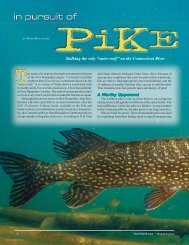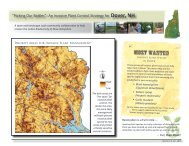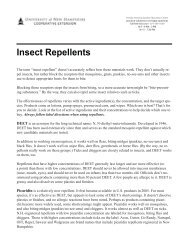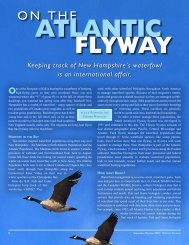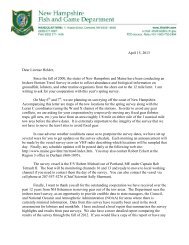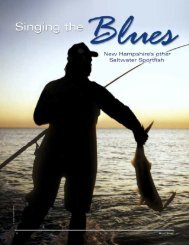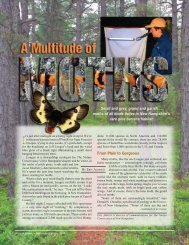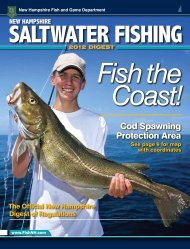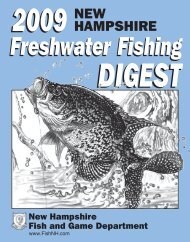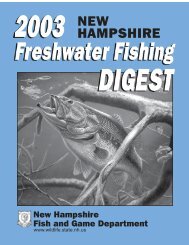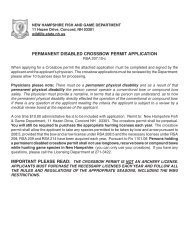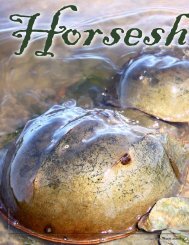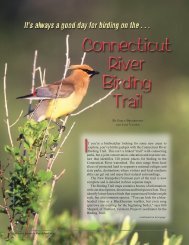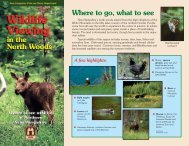Official NH Digest of Regulations - New Hampshire Fish and Game ...
Official NH Digest of Regulations - New Hampshire Fish and Game ...
Official NH Digest of Regulations - New Hampshire Fish and Game ...
You also want an ePaper? Increase the reach of your titles
YUMPU automatically turns print PDFs into web optimized ePapers that Google loves.
Shellfish Areas<br />
N.H. Coast Shellfish Open/Closed Areas<br />
The Coast<br />
The Coastal Conservation Association <strong>of</strong> <strong>New</strong> <strong>Hampshire</strong>’s<br />
Great Bay Oyster Shell<br />
Recycling Project<br />
Supported by the Orvis Co.<br />
Historic Reef<br />
Current Reef<br />
3-ac Shell Area<br />
Great Bay has lost 90% <strong>of</strong> its oyster reefs from<br />
their abundant historical levels. Oysters once<br />
filtered all the water <strong>of</strong> Great Bay every few days;<br />
now it takes months!<br />
Help us get the shell it takes<br />
to restore these reefs <strong>and</strong> our oysters.<br />
Visit www.ccanh.org or call 603.770.3201<br />
Proper Clam Digging Techniques<br />
1. Select <strong>and</strong> cut a manageable section <strong>of</strong><br />
flat on four sides.<br />
3. Turn the piece <strong>of</strong> flat completely over <strong>and</strong><br />
place it in the resulting furrow. (Placing the<br />
piece to one side may needlessly cover an<br />
undug area with small clams vulnerable to<br />
smothering.)<br />
5. With fork tines straight downward, gently<br />
break up the section <strong>of</strong> flat to expose the<br />
remaining clams.<br />
2. Try to judge the location <strong>and</strong> depth <strong>of</strong> most<br />
clams <strong>of</strong> suitable size. Work fork into the<br />
flat with gentle rocking motion, adjusting<br />
angle <strong>of</strong> fork to move between <strong>and</strong> under<br />
the clam burrows.<br />
4. Pick out the exposed clams that are <strong>of</strong><br />
suitable size.<br />
6. When all harvestable clams have been<br />
taken from the piece, simply leave it as it lies<br />
in the furrow. This protects the remaining<br />
clams from predators such as crabs <strong>and</strong><br />
gulls. Clams not harvested with gradually<br />
return to an upright feeding position.<br />
www.<strong>Fish</strong><strong>NH</strong>.com 25



